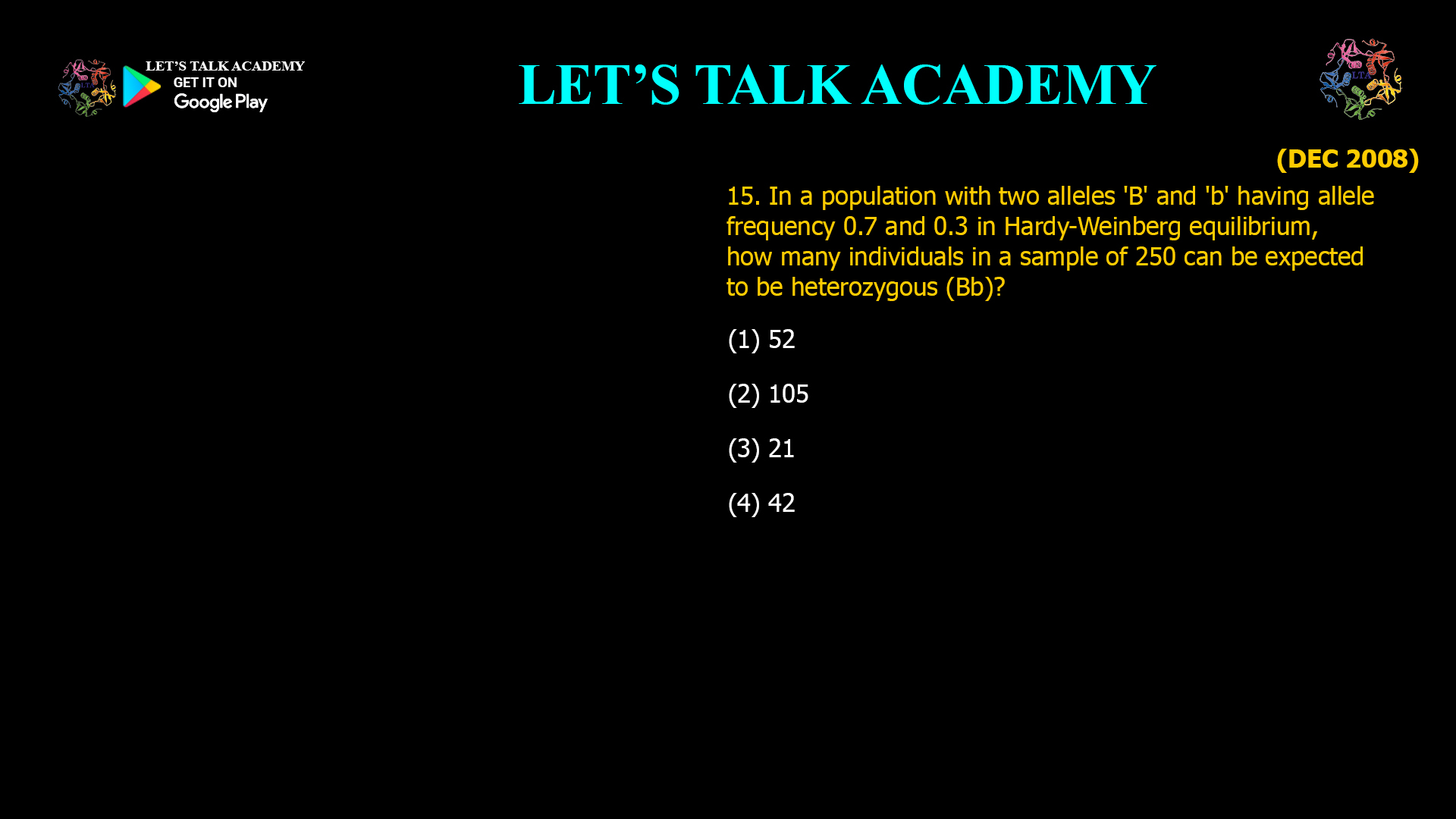- In a population with two alleles ‘B’ and ‘b’ having allele frequency 0.7 and 0.3 in Hardy-Weinberg equilibrium, how many individuals in a sample of 250 can be expected to be heterozygous (Bb)?
(1) 52 (2) 105
(3) 21 (4) 42Calculating the Number of Heterozygous Individuals Using Hardy-Weinberg Equilibrium
The Hardy-Weinberg principle is a fundamental tool in population genetics that allows us to predict genotype frequencies based on allele frequencies in a population assumed to be in equilibrium. One common application is estimating the number of heterozygous individuals in a population.
Given Data
-
Allele frequency of B (p) = 0.7
-
Allele frequency of b (q) = 0.3
-
Population size = 250 individuals
Step 1: Recall the Hardy-Weinberg Equation
The genotype frequencies in a population with two alleles are given by:
p2+2pq+q2=1
Where:
-
p2 = frequency of homozygous dominant (BB)
-
2pq = frequency of heterozygotes (Bb)
-
q2 = frequency of homozygous recessive (bb)
Step 2: Calculate the Frequency of Heterozygotes
The frequency of heterozygotes (Bb) is:
2pq=2×0.7×0.3=2×0.21=0.42
Step 3: Calculate the Number of Heterozygous Individuals
Multiply the heterozygote frequency by the total population size:
0.42×250=105
Step 4: Select the Correct Answer
From the options provided:
-
(1) 52
-
(2) 105
-
(3) 21
-
(4) 42
The correct answer is 105.
Why This Calculation Is Important
-
Population Genetics: Helps understand genetic variation within populations.
-
Medical Genetics: Useful in estimating carriers of genetic diseases.
-
Evolutionary Biology: Detects deviations from equilibrium indicating evolutionary forces.
Conclusion
In a population of 250 individuals with allele frequencies 0.7 (B) and 0.3 (b), the expected number of heterozygous (Bb) individuals under Hardy-Weinberg equilibrium is 105.
Correct answer: (2) 105
-



